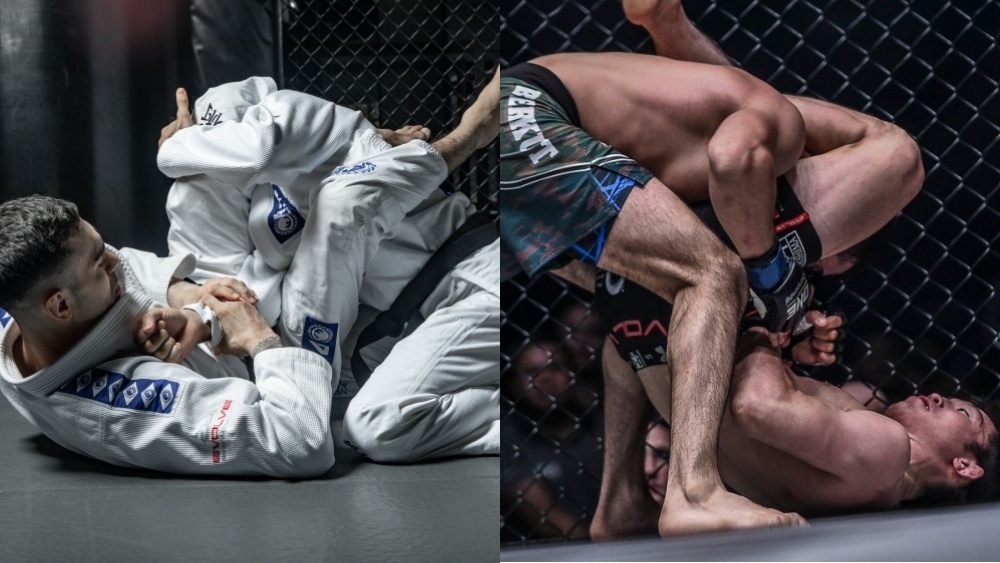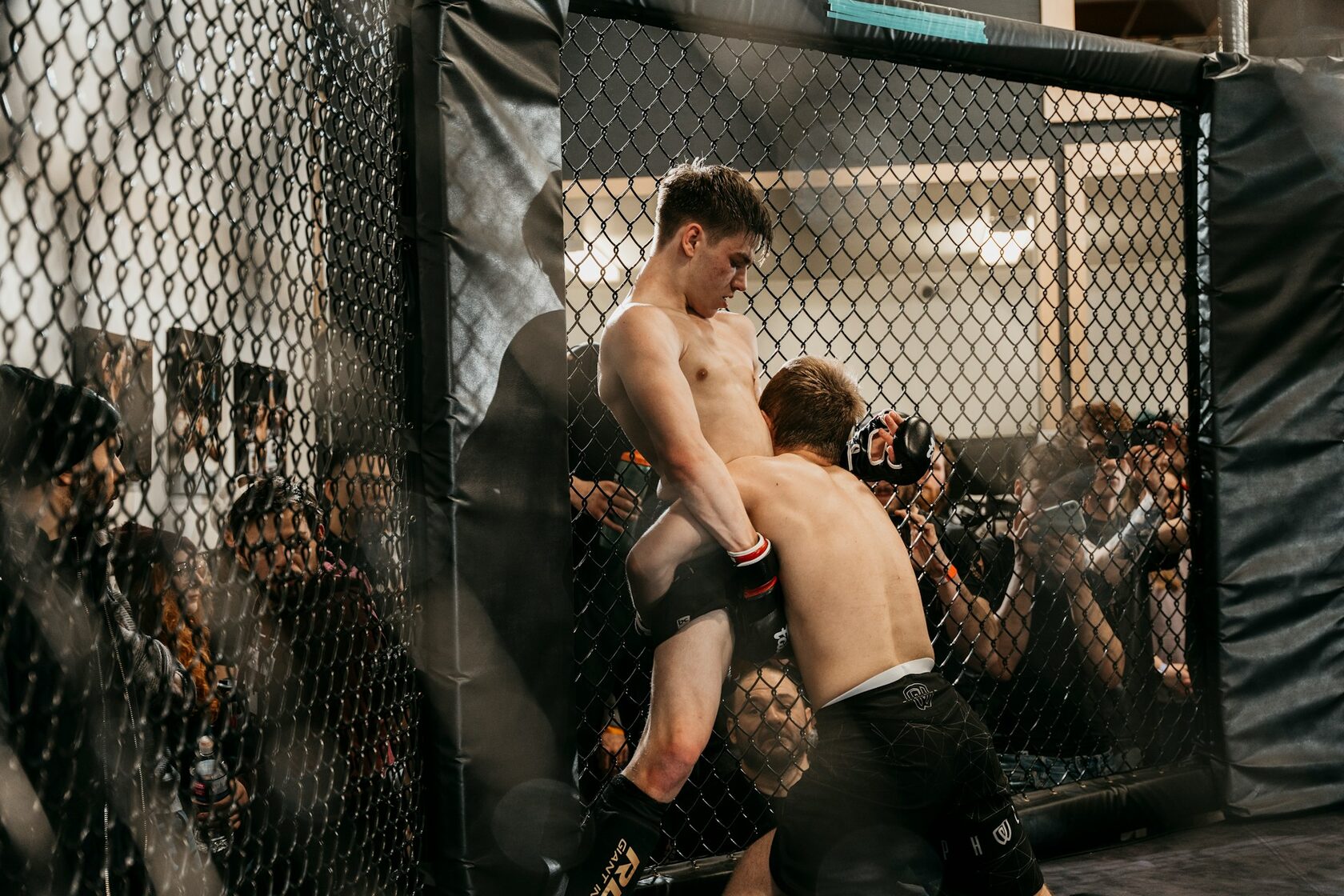Brazilian Jiu-Jitsu rose to prominence globally, largely due to its effectiveness in early mixed martial arts competitions. As MMA evolved into its distinct fighting style, gyms dedicated to it proliferated worldwide.
While many BJJ techniques and positions remain foundational in MMA grappling, the integration of strikes has transformed its dynamics significantly. MMA grappling has developed its unique approach, requiring adaptations to optimize techniques within the confines of the cage.
This article delves into the primary similarities and differences between BJJ and MMA grappling, highlighting how the inclusion of strikes influences grappling strategies in the cage.
While many BJJ techniques and positions remain foundational in MMA grappling, the integration of strikes has transformed its dynamics significantly. MMA grappling has developed its unique approach, requiring adaptations to optimize techniques within the confines of the cage.
This article delves into the primary similarities and differences between BJJ and MMA grappling, highlighting how the inclusion of strikes influences grappling strategies in the cage.
Exploring the Parallels and Contrasts of BJJ and MMA Grappling
Brazilian Jiu-Jitsu originated in the 20th century, innovated by Helio Gracie and his brothers who adapted traditional Jiu-Jitsu techniques for ground combat. It serves both as a sport and a highly effective self-defense method in one-on-one combat scenarios.
Mixed Martial Arts (MMA), initially a ruleset for competitive tournaments, emerged to evaluate the effectiveness of various martial arts styles. Over time, MMA evolved into its own martial art and self-defense system, incorporating elements from wrestling, Judo, Boxing, Muay Thai, Dutch kickboxing, and Brazilian Jiu-Jitsu.
Mixed Martial Arts (MMA), initially a ruleset for competitive tournaments, emerged to evaluate the effectiveness of various martial arts styles. Over time, MMA evolved into its own martial art and self-defense system, incorporating elements from wrestling, Judo, Boxing, Muay Thai, Dutch kickboxing, and Brazilian Jiu-Jitsu.
Training Differences
Let's explore the differences in teaching approaches between BJJ and MMA grappling classes.
1.Attire

Most Brazilian Jiu-Jitsu schools emphasize sport BJJ, which centers around submitting opponents using chokes and joint locks. In sport BJJ, strikes are not permitted during training sessions, ensuring practitioners can focus solely on grappling techniques without the concern of getting hit. Sport BJJ is commonly divided into two categories: gi and no-gi. Gi BJJ involves wearing a traditional Jiu-Jitsu kimono, whereas no-gi allows practitioners to train in shorts and T-shirts, emphasizing different grips and techniques suited for grappling without the gi.

In MMA grappling, the gi is typically omitted because modern mixed martial arts competitions do not allow its use. Students often train shirtless to simulate competition conditions, where they will also compete shirtless. This approach helps them adapt to grappling without relying on the grips and friction provided by clothing. Even a T-shirt can drastically alter the dynamics of grappling by providing additional control, particularly in sweaty conditions.
2.Philosophy

In MMA grappling, practitioners simulate strikes such as punches and elbows to deter fighters from settling into positions that might be neutral in BJJ but could leave them vulnerable in a real fight. For instance, the guard position, which offers control in BJJ, could expose a fighter to strikes in MMA if not managed carefully.

The guard position is a hallmark of BJJ, often seen as advantageous for the bottom player if their BJJ skills are proficient. Many more submissions and effective sweeps can be initiated from the bottom guard compared to the top. However, in MMA, playing bottom guard poses challenges: there are no points awarded for it, and it exposes the fighter to ground strikes.
In sport BJJ, practitioners can play guard without concern for strikes, which allows for extensive exploration of techniques. Combat BJJ, where open-handed strikes are permitted, seeks to bridge this gap by introducing a more realistic dynamic. Nevertheless, it remains less popular than traditional sport Jiu-Jitsu.
In sport BJJ, practitioners can play guard without concern for strikes, which allows for extensive exploration of techniques. Combat BJJ, where open-handed strikes are permitted, seeks to bridge this gap by introducing a more realistic dynamic. Nevertheless, it remains less popular than traditional sport Jiu-Jitsu.
3.Takedowns

In MMA grappling, there is a heightened emphasis on both takedown defense and executing takedowns compared to traditional BJJ. While BJJ primarily focuses on ground fighting, training often begins with sparring sessions starting from the knees. This approach ensures that the majority of sparring time is dedicated to refining ground techniques rather than grappling for takedowns.
Basic takedowns such as the single and double leg are indeed taught in BJJ, alongside some throws and trips. However, compared to disciplines like Judo or Wrestling, BJJ students typically spend less time honing these aspects of combat. Many BJJ practitioners intensify their focus on takedowns specifically when preparing for competitions.
Basic takedowns such as the single and double leg are indeed taught in BJJ, alongside some throws and trips. However, compared to disciplines like Judo or Wrestling, BJJ students typically spend less time honing these aspects of combat. Many BJJ practitioners intensify their focus on takedowns specifically when preparing for competitions.

MMA grappling places a significant emphasis on takedowns because they score points and are essential for transitioning to the ground game. Since all MMA rounds start standing, knowing effective takedowns is crucial for implementing ground techniques against opponents trained in takedown defense. Unlike BJJ, MMA fighters often use strikes strategically to set up their takedowns, which adds a tactical dimension to their approach.
Moreover, MMA fighters must also master takedown defense to thwart opponents' game plans. A well-executed takedown can sway closely contested rounds in MMA, highlighting the importance of making opponents work hard for every attempt. Effective takedown defense not only exhausts opponents but also dissuades them from attempting further takedowns, thereby influencing the flow of the fight.
Moreover, MMA fighters must also master takedown defense to thwart opponents' game plans. A well-executed takedown can sway closely contested rounds in MMA, highlighting the importance of making opponents work hard for every attempt. Effective takedown defense not only exhausts opponents but also dissuades them from attempting further takedowns, thereby influencing the flow of the fight.
4.Submissions

MMA grappling introduces unique challenges such as dealing with strikes, grappling without the leverage of a gi, and utilizing the cage both offensively and defensively. These factors significantly alter grappling tactics in MMA. Unlike in traditional BJJ, where intricate setups and positions like the deep-half guard are viable, MMA fighters often simplify their approach to focus on fundamental techniques that minimize exposure to strikes.
In MMA grappling, practitioners prioritize basic submissions and strategically integrate strikes to set up their attacks. This blending of ground strikes with grappling transitions is a skill distinct to MMA and isn't typically emphasized in traditional BJJ training.
In MMA grappling, practitioners prioritize basic submissions and strategically integrate strikes to set up their attacks. This blending of ground strikes with grappling transitions is a skill distinct to MMA and isn't typically emphasized in traditional BJJ training.
Similarities
While MMA grappling and BJJ have notable differences, their fundamental principles largely overlap. Positions such as top mount, back mount, half guard, and butterfly guard are equally prevalent in both disciplines. Likewise, staple submissions in BJJ such as the armbar, rear-naked choke, triangle choke, arm triangle, kneebar, ankle lock, and guillotine choke are highly effective in MMA settings.
A proficient BJJ practitioner can transition well into MMA by adjusting their grappling strategy to accommodate strikes. Although both disciplines are effective for self-defense, MMA grappling offers an added advantage by mentally preparing practitioners to handle strikes during grappling exchanges.
A proficient BJJ practitioner can transition well into MMA by adjusting their grappling strategy to accommodate strikes. Although both disciplines are effective for self-defense, MMA grappling offers an added advantage by mentally preparing practitioners to handle strikes during grappling exchanges.

